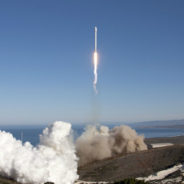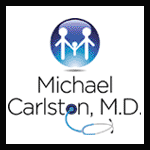
This article might appear to be about thallium and rocket fuel in your food, but it really isn’t. We all agree that it is important to be careful about what we eat. The most important reason to be careful is not because of what we know. More important is what we don’t know. Many people think they have a healthy, or even excellent diet because they eat organically, avoid gluten or maybe because they are vegan. Those can be good ideas for some, but a healthy diet is too slippery to grasp quite so easily.
Concerned about the quality of food, organic food has become very common. This is a welcome and dramatic change from when I first joined an organic food co-op 45 years ago just to get my hands (and teeth) on such rare produce. Although folks are wisely cautious about pesticides, herbicides, fertilizers and GMOs, very few people consider the water that went into their food. That’s a big mistake.
In my book, Better Than Medicines, I recounted a study that revealed this problem nearly 20 years ago. Over 80% of the organic greens sold in the San Francisco Bay Area were found to contain rocket fuel! How could that be? It turned out that the storage tanks at Edwards Air Force base were leaking the fuel into the regional ground water.
As I also recounted in Better Than Medicines, there have been incidents of deadly e coli (stool bacteria) spread to organic crops in water run-off from neighboring cattle ranches owned by the same conglomerate. “Organic” used to mean small family farms with fastidious attention to the crops. It is an entirely different world today.
The quality of water applied to crops is a gaping wide and serious blind spot in our knowledge about the safety of foods we consume. It’s a big deal, but it’s still just one element of our ignorance. Your food is a product of the environment in which it is grown. Here is another example:
Just about every patient I see believes that the best thing they do (or should do) to make their diet perfect is to consume huge quantities of dark leafy green veggies. In my official role as a troublemaker, I have to shatter that illusion. Although I value the rich vitamin, mineral, polyphenol and alkaloid content of those earthy greens, that rich intensity also leads to problems.
First, many think of plants as a wonderfully gentle form of life here to provide humans with nutrients. This rainbows and sunshine image is not real. In truth, biologically-speaking and just like us, plants want to live and thrive. They do what they have to do to survive. In their own way, plants can be as ruthless as any stalking predator. Some plants are themselves meat eaters. Plants make nasty nerve toxins that protect them from most insects. If they didn’t, they would have all been gobbled up long ago. Humans are lucky, because for the most part, those toxins don’t hurt us. Other toxins we have learned to avoid over the millennia.
Next, the plants we think of as the most nutritious are nutritious because they concentrate nutrients from the soil they grow in. News flash – the plants don’t selectively absorb nutrients that are good for us. So, is it surprising that there are reports of heavy metal toxicity (arsenic, cadmium, lead) from greens, including organic greens?
Perhaps due to our volcanic soil, I have been seeing patients with thallium poisoning (another heavy metal) from eating locally grown organic greens. In addition to those dark leafy greens, other plants like cabbage, watercress, turnip, radishes, spinach and beets accumulate thallium from the soil in which they grow. The safest plants to grow in high thallium soil are green beans, tomatoes, onions and regular old lettuce. (BTW- In other parts of the country, thallium accumulates in the soil from burning coal).
I love organic, but locally grown ensures freshness (aka, higher nutrient levels in the food). If your food is grown nearby, you are more likely to know if the farm is next to a freeway or downhill from what used to be a toxic waste dump. With local knowledge you may learn about local issues with thallium, but what do you really know about that organic fruit for sale at the big discount store imported from China?
It is obvious that you should avoid problems you know about, but that is just not enough. At the same time, being afraid of everything is not a solution. What should we do to eat the healthiest diet? How do you protect yourself and your family from what you don’t know?
The key to coping with this complicated and uncertain reality is quite simple. The most essential and overlooked rule of healthy eating is variety. Again, this isn’t just about thallium and rocket fuel. Avoid dangerous dietary ruts and mix up the foods you eat.
No matter how wonderful any one food may be, eating it all the time is a threat to your health. Eating the same thing narrows the range of healthy bacteria in your body, increasing your vulnerability to diseases. Bad stuff can creep into really good food without us knowing about it. No one tests the water the plants drink or the air they “breathe” from the neighboring freeway.
Then there is our limited and imperfect knowledge. We continue to learn about food components that are good or bad for us. A few years ago nobody knew anything about polyphenols. Now we know that polyphenols are the most important dietary component lowering heart disease and cancer rates. We don’t know it all.
Not to downplay thallium and rocket fuel, this article is really about dietary diversity. Eating a variety of foods automatically makes you safer. You will limit your exposure to bad stuff we don’t know about and pick up good things we haven’t yet learned are important. Dietary diversity is the best defense against ignorance and makes for tastier meals.
